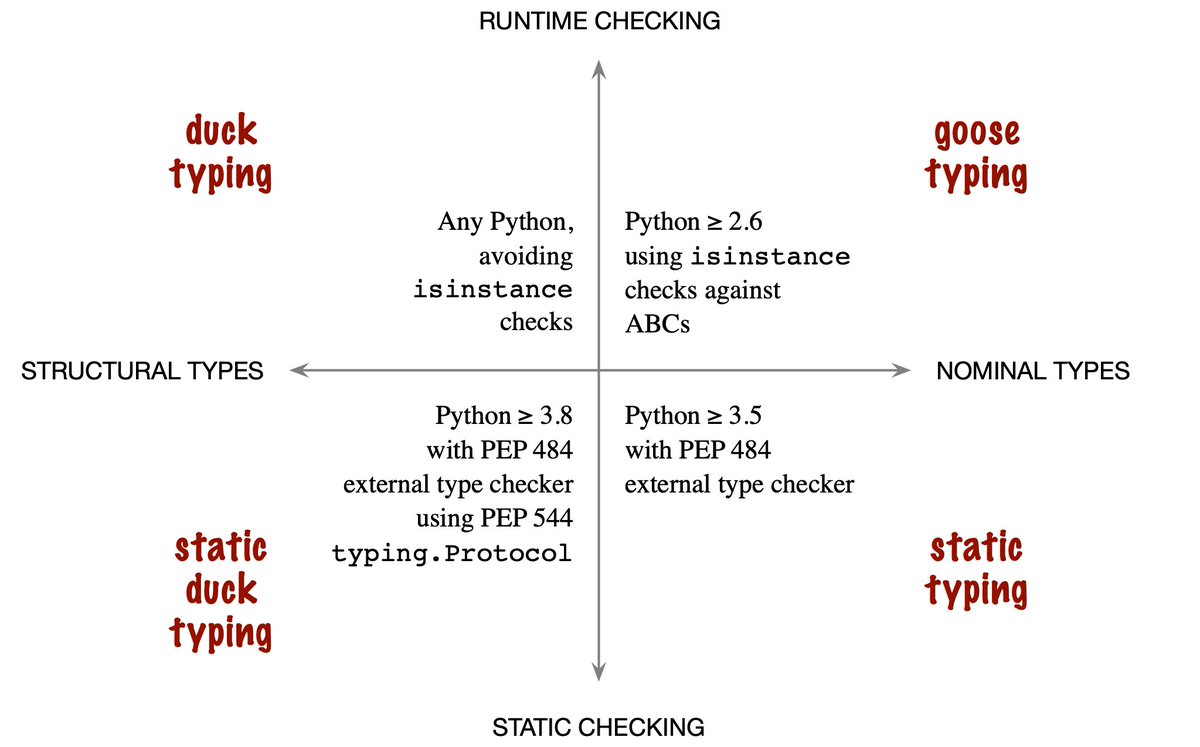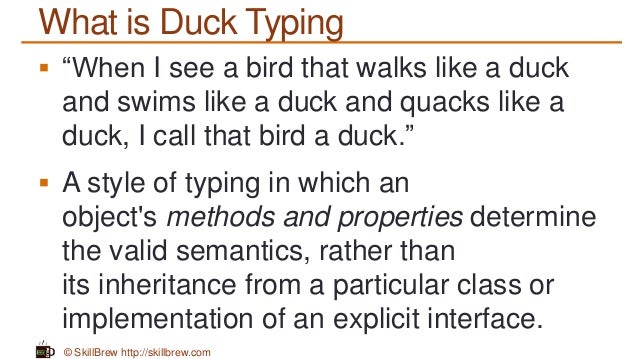


There might be a sense in which it has an instantaneous type-a type it has as of a given program world-state-but that information is inaccessible to the runtime, since any probing it might do to ascertain this might also cause the object's instantaneous typing to change in the middle of the probing procedure. What is such an object's "type", even in the sense of its "runtime type"? There isn't one. These can exist in any duck-typed runtime system. The notion of there being a "type" to a duck-typed object is purely a theoretical one in practice, the object just does whatever it wants moment-to-moment, and the runtime has no idea.Ĭonsider a generic "proxy" object that can be arbitrarily disconnected and reconnected to objects of different types.

It's not like the runtime constructs a typing model out of its observations of the properties of objects' runtime interactions. When you're talking about type systems, "dynamic" really doesn't make much sense to talk about. It's interesting as a development away from inheritance and towards composition and loose coupling of static program components. Golang furthers the notion of capabilities as shared method signatures, by loosely binding this into interfaces, and enforcing many errors by static type checks at compile time. Errorhandling thus delegated almost entirely to runtime beyond basic syntax parsing. Thus, you could dynamically invoke any object with any methods, without regards to compile-time constraints or "types". It's not unheard of monkey patching Integer or Array classes, core parts of standard library and language. you can modify behaviour of almost all classes/objects by adding/removing methods, mixin, etc. With ruby, most everything you interact with is a true object, ie. Duck typing as a concept was re(?)-popularized around the advent of ruby, so might make sense to talk from a ruby perspective:


 0 kommentar(er)
0 kommentar(er)
